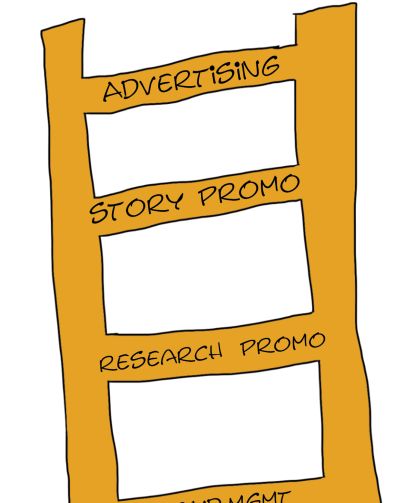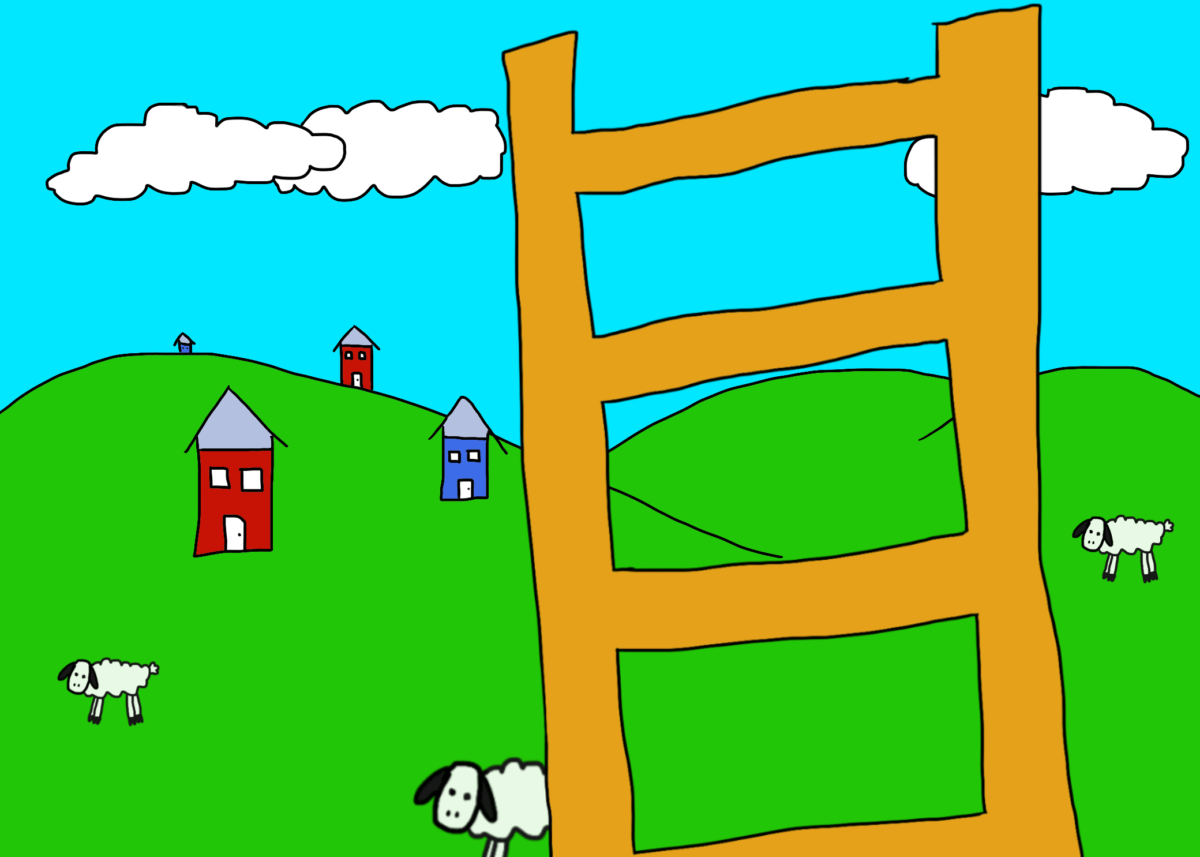Risk management is a tricky business. Heck, risk is a tricky business — I bought and read a book on the subject a few years ago (The Science of Fear, but titled Risk when I bought it).
It was an eye-opener — a lot of things I’d intuited but never really understood laid out plain, with the general takeaway that as story-driven people, we perceive risk on a very different level than risk exists at.
It’s important, initially, to understand that there’s a massive tension at the heart of marketing for any great institution.
Marketing is by its nature disruptive. It’s meant to get and hold attention, and doing things in exactly the expected way, as safely as possible, is not a good way of doing that. You capture attention through innovative and different ways of doing things.
Innovation, and difference — are risky.
This makes marketing and communications in higher ed a perpetual engine of contradiction: you succeed by being innovative and disruptive, but are beholden to steward a brand and story that can be hundreds of years old, with stakeholders spanning older alumni, major donors, government, the worlds of science and the arts, the local community, prospective students, current students… and more besides.
In higher ed, I’ve been coming to realize that part of the risk aversion is due to the breadth of the stakeholder base, and also that marketing and communications means a lot in this context.
It’s a very broad idea that gathers a lot of types of thinking, and they sometimes get bundled as a single understanding of risk — and consequent processes — than separated out into constituent parts with their own risk profile.
I’m thinking about that, and thinking about ladders.
Ladders are risky; the higher you climb, the worse you can fall.
But the higher you climb, the more you’re laddering. You can reach more, see further… every rung up the ladder makes it more ladder and less… tiptoes or stepstool.
What if we were to look at the range of activity like a ladder? Some things mean climbing higher and chancing more to do them well. Others — stay close to the ground.

- Advertising
- Story promotion
- Research promotion
- Brand management
- Storytelling
- Awards / events
- Internal announcements
- Government/Industry relations
- Crisis communications
The funny thing about the ladder is that I keep trying to conflate activity types with channel types, to the point that I think there’s a whole separate question here to look at: must certain channels be riskier than others? It feels like social media has to be more daring to cut through the noise / clutter / amazingly entertaining things out there, while web-based or print journalism can be a bit more stoic.
I’ve carved it up as story promotion and storytelling above, which at a glance might seem incoherent. But I think there’s a less-risky, more-staid “story” on the site, or in print, but what drives eyes to that story — on social media, or elsewhere — needs to be a bit more marketing-ish to succeed.
This is a bit of a bolt from the blue moment for me, as I realize I’ve actually settled into a pretty static view of storytelling myself; I’ve been thinking of the full-story-to-social-media spectrum as a continuity of the same thing, not that the social media component is actually advertising for the story it’s sharing… it’s a subtle difference, but it feels profound the more I think about it.
There’s also an audience ladder that I think lives next to the activity ladders, organized roughly and unscientifically according to how much moxie I think goes into reaching them across the board:
- Prospective undergrads
- Prospective grad students
- Prospective faculty
- Alumni
- General public
- Internal audiences
- Government
- The Concerned
Prospective undergrad students? How are you going to tell them you have the best theatre program in the country in a way that competes with Twitch livestreams and TikTok?
And so on down the chain, in frankly a slightly ageist way (sorry); alumni squarely in the middle because they encompass such a broad range of ages and interests; The Concerned being that specific set of people that are agitated about a very specific issue that crisis communications needs to manage. They may be all over the map demographically, but the crisis at hand is not the right time to get innovative in how you’re addressing it.
The central point being — I think risk is ill-understood everywhere, but there’s a conflated sense of risk in higher ed, and people outside the marcomms sphere will assume that when you’re stewarding a mighty, generations-old brand, the risk aversion mentality of the lower rungs of the ladder should be applied to everything.
Which is — well, safe, which is I guess the point, but it means you never get to climb.
One tactic I’ve used to have risk conversations in the past is a causal chain approach: acknowledging that there’s a level of risk in what you’re doing, but asking the other party to unpack with you where the risk actually resides. Is there a high probability of a negative outcome, or is a negative outcome the result of a series of increasingly improbable events?
What’s the negative outcome they’re worried about… and, step by step, how does one arrive there? Sometimes there’s a probable risk — and change is needed — but sometimes you find that the path to the actual problem is so long, and so unlikely, that the benefit of a more readable piece, or more functional marketing, is worth accepting a very slight chance of a bad outcome.
It comes up when people conflate audiences — what if somebody on a lower rung sees something intended for an audience on a higher rung? It’s a legitimate concern, but in an increasingly crowded media world, are we evaluating that risk effectively and well? And what benefits are we losing by gearing higher-rung needs down to lower rungs?
An understanding of the ladder, though — that different things, for different audiences, may ask us to look at risk differently — that feels like a narrative I should try to advance in my conversations.
Getting back to the ladder metaphor, there’s a lot left there to unpack as well. There are safe and unsafe ways to use a ladder (I am, in the context of my organization, a certified ladder user, I have taken a specific ladder safety course and am now allowed to use ladders). There’s how you situate the ladder, what you lean it against, what it’s resting on… man, you can just ladder-metaphor all day. But I’m happy with the height/view/fall element for now.
February 28, 2021
Soundtrack:
Various Artists; “Put On Your Best Dress: Sonia Pottinger’s Ska & Rock Steady 1966-67”
Various Artists; “Different Fashion: High Note Dancehall Collection”
